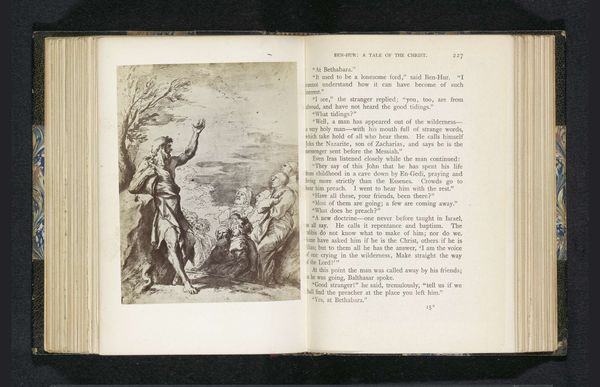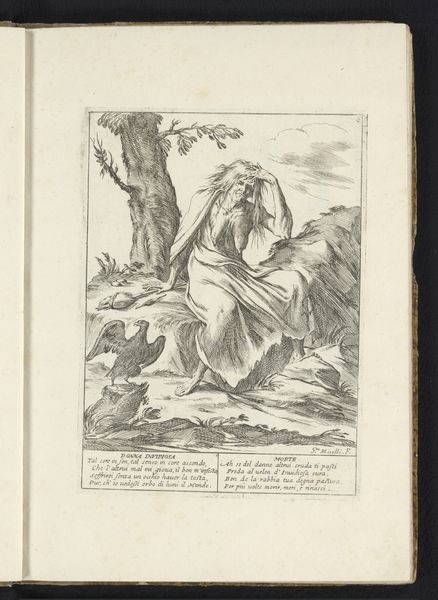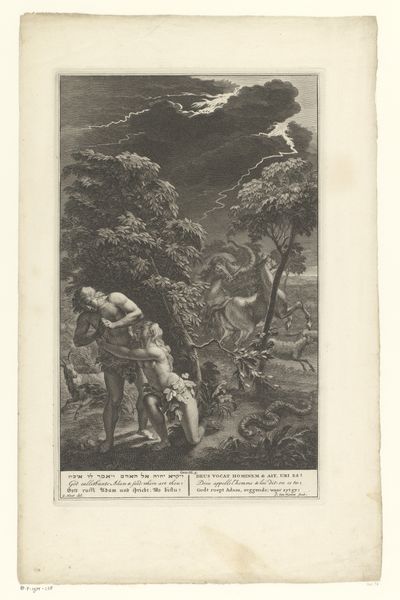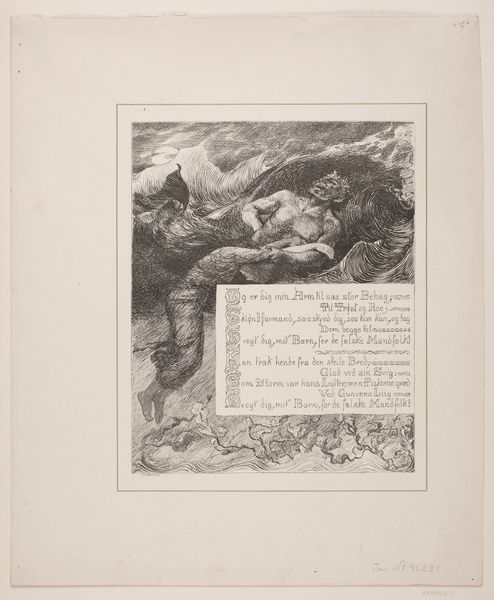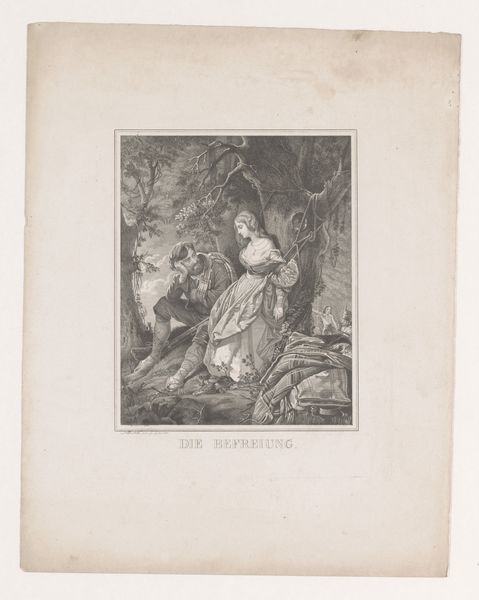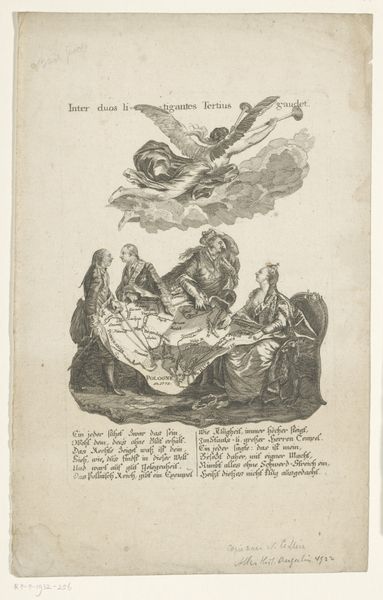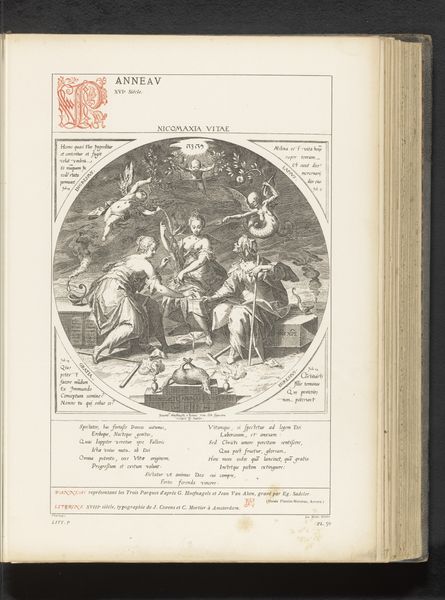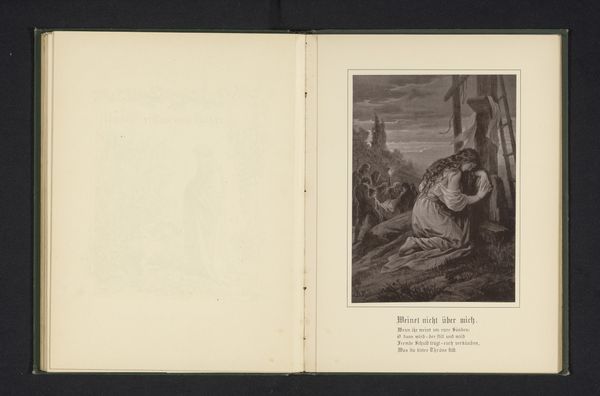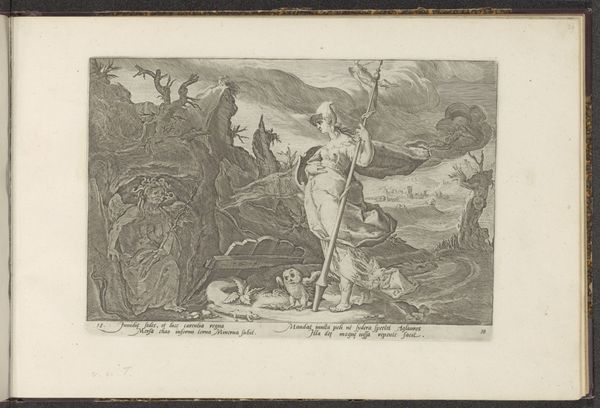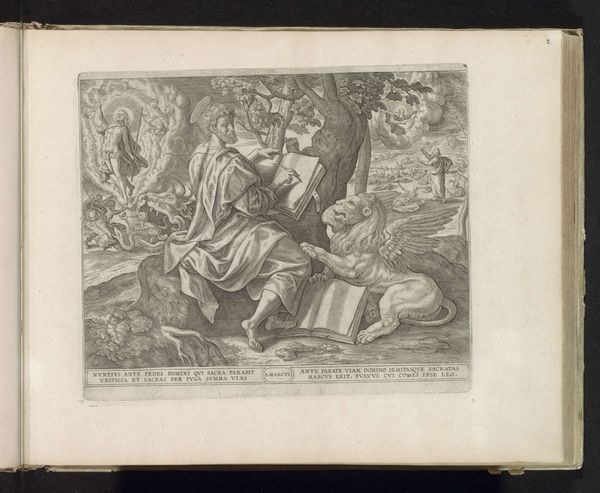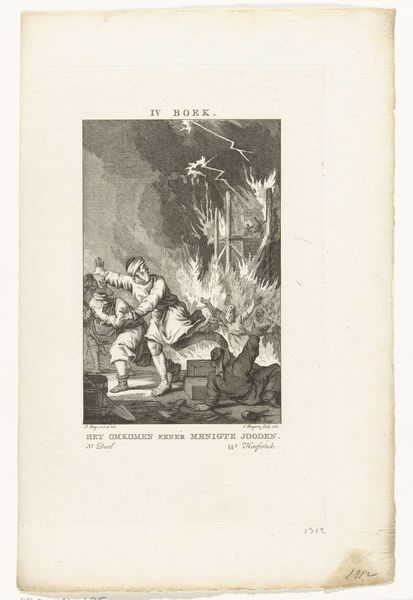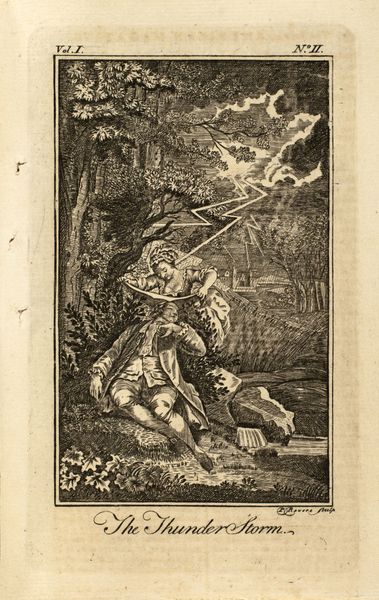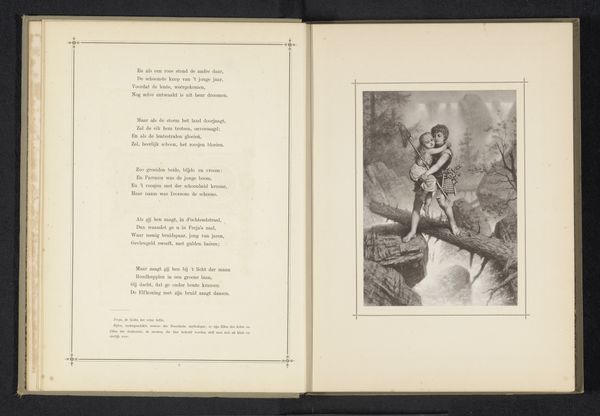
Vadertje Tijd boven een deemoedige vrouw aan een offeraltaar en een vrouw die haar roes uitslaapt c. 1725 - 1730
0:00
0:00
jakobwangner
Rijksmuseum
print, engraving
#
allegory
#
baroque
# print
#
old engraving style
#
figuration
#
history-painting
#
engraving
Dimensions: height 240 mm, width 160 mm
Copyright: Rijks Museum: Open Domain
Curator: This engraving by Jakob Wangner, dating from around 1725-1730, is titled "Vadertje Tijd boven een deemoedige vrouw aan een offeraltaar en een vrouw die haar roes uitslaapt," which translates to "Father Time above a humble woman at an altar and a woman sleeping off her drunkenness". Quite a mouthful, isn’t it? What strikes you first about it? Editor: The contrast! You have this dynamic, almost violent figure of Time wielding his scythe contrasted against the static, almost sorrowful scene below. The slumbering woman looks so vulnerable, completely unaware of the looming Father Time. Curator: The image employs common Baroque allegorical devices. Father Time, for example, carrying his signature scythe, symbolizes the relentless march of time. And the two women below visually embody the choices offered in life, one religious humility, the other unrestrained physical pleasure, themes resonant during that period. Printmaking, through workshops such as Jeremias Wolff were then highly important public means to spread morality. Editor: Absolutely. The symbolism is layered. Notice the altar—the "humble woman" presents an offering, seeking divine grace. In contrast, the sleeping woman’s posture is loose, almost abandoned. Her indulgence suggests a disregard for anything beyond immediate gratification, evoking symbols of Dionysus or Bacchus, the gods of wine and excess. Curator: These types of allegorical scenes were enormously popular, frequently used to comment on the shifting moral landscape of the era, a time of growing mercantilism and shifts away from solely religious devotion as primary modes of behavior. How people understood public responsibility changed, and those images reflected those tensions. Editor: I see Father Time less as a threatening figure here and more as a reminder, or maybe even a judge, holding up a laurel wreath but also carrying his lethal weapon as symbols of possible consequences and achievements in a human life. It asks us to contemplate the passage of time and the impact our choices have on our destinies. The lightning behind him seems to confirm some divine implication to this evaluation. Curator: Indeed. Wangner provides an intriguing view of moral agency at a critical turning point in early modern European history. This engraving would undoubtedly prompt strong responses and, hopefully, reflection about life's paths. Editor: It makes you consider the symbolic weight we attach to our choices, then and now. Fascinating.
Comments
No comments
Be the first to comment and join the conversation on the ultimate creative platform.
